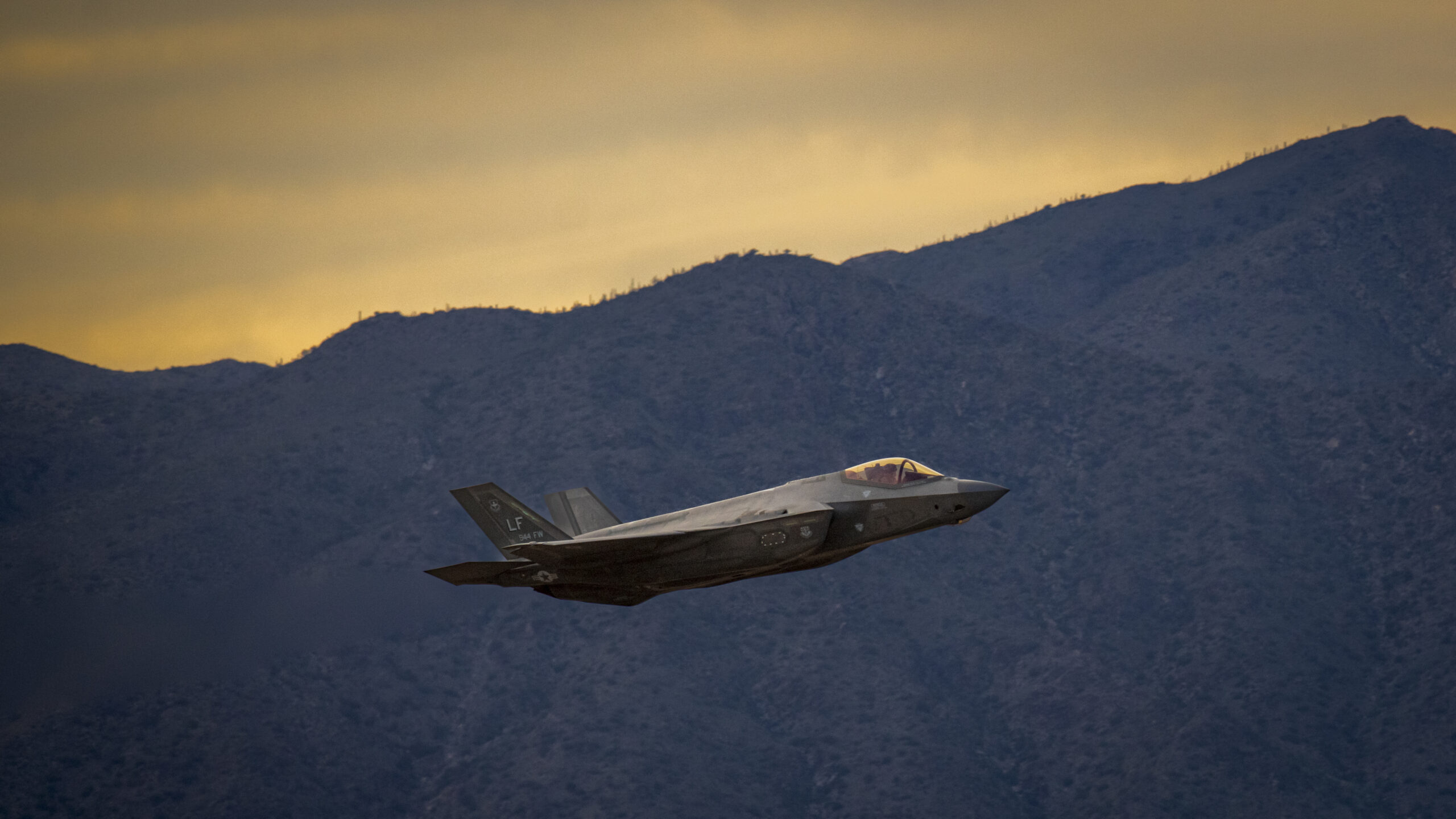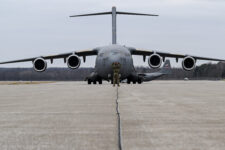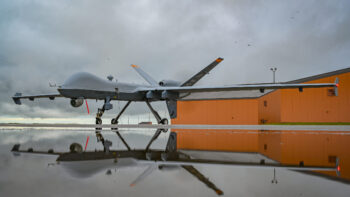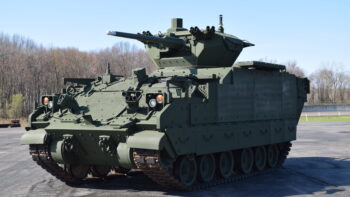
An F-35 Lightning II assigned to the 944th Fighter Wing, takes off from Luke Air Force Base, Arizona, Nov. 15, 2022. (U.S. Air Force photo by Senior Airman Noah D. Coger)
WASHINGTON — A five-year deal between the Pentagon and Lockheed Martin for a new sustainment contract for the F-35 enterprise likely won’t be reached this year, according to Lockheed Martin Chief Financial Officer Jay Malave.
“We’ve already submitted a proposal to the Joint Program Office for sustainment. You know, originally we were expecting that we can get under contract by the end of the year. It probably will extend out to the beginning of next year is probably the most likely scenario,” he said during a conference hosted by Morgan Stanley.
Malave then cautioned that the timeline is not firm, adding, “Our hope would be that we can get that under contract in the first quarter of next year, but again, it will be an ongoing dialogue.”
Earlier this year, officials said an award for the new sustainment contract was on track for the end of this year, though Malave’s remarks today seem to put that schedule out of reach.
Lockheed has been pushing for the new sustainment approach called performance-based logistics (PBL) — which would govern the supply of spare parts and tie dollar awards to performance outcomes — for several years, though the Pentagon has been wary of locking itself into the proposed five-year deal. For the arrangement to go forward, the Pentagon must certify that the PBL would either decrease sustainment costs or increase readiness due to a mandate imposed by the fiscal 2022 National Defense Authorization Act.
The F-35 program has taken a hit recently over delays with its Tech Refresh 3 (TR-3) upgrade, which provides features like improved processing power to facilitate a suite of new capabilities known as Block 4. As a result, the government won’t accept newly-built jets in the TR-3 configuration, Breaking Defense previously reported, though the company is continuing to build and deliver fighters equipped with TR-2.
The company could suffer a payment delay of around $800 million over the issue, Bloomberg reported, as F-35s languish in storage until the program can wring out lingering software issues. Due to the delays, Lockheed reduced its F-35 delivery outlook in 2023 to 97 of the stealth fighters.
Lockheed Chief Executive Officer Jim Taiclet said during the conference today that TR-3’s woes can be traced back to late hardware deliveries, which the company highlighted in a statement to reporters last week.
“The history of the Tech Refresh 3 has been late hardware deliveries. This is a hardware replacement for the core processor, which is the brain of the airplane, the data storage device and the whole panoramic cockpit,” said Taiclet. The aircraft’s integrated core processor is built by L3Harris, though Taiclet did not mention the company by name.
“With that will come a major software upgrade but the fact that much of the hardware was late and some subcomponents to that hardware was also late in front of it, that compressed the software integration test program dramatically. And both government and industry wanted to try to keep the original schedule as much as we could. And we’re just not able to do that, only because the compression is too aggressive.”
However, Taiclet said that with the knowledge gained from completed tests, “I’ve got high confidence… we should be able to hit the target that we made in our statement last week.”
In a Tuesday roundtable with reporters, Air Force Gen. Mark Kelly described the current schedule for TR-3 as “high risk.” Kelly heads the Air Force’s Air Combat Command, which employs the F-35.
“If you look at the number of actions that have to take place, in terms of TR-3 burn down that they need to execute between now and then, it’s doable. Possible and probable are not anywhere — only in the dictionary are those two words close to each other,” he said.
“It’s hard work. We get paid to do hard things. It’ll be hard though.”
Hezbollah, Houthis downing of drones challenges Israel, US air superiority
“Israel and the United States will need to gradually adjust their operating procedures,” said Bruce Bennett, senior adjunct international defense researcher at RAND Corporation.


























